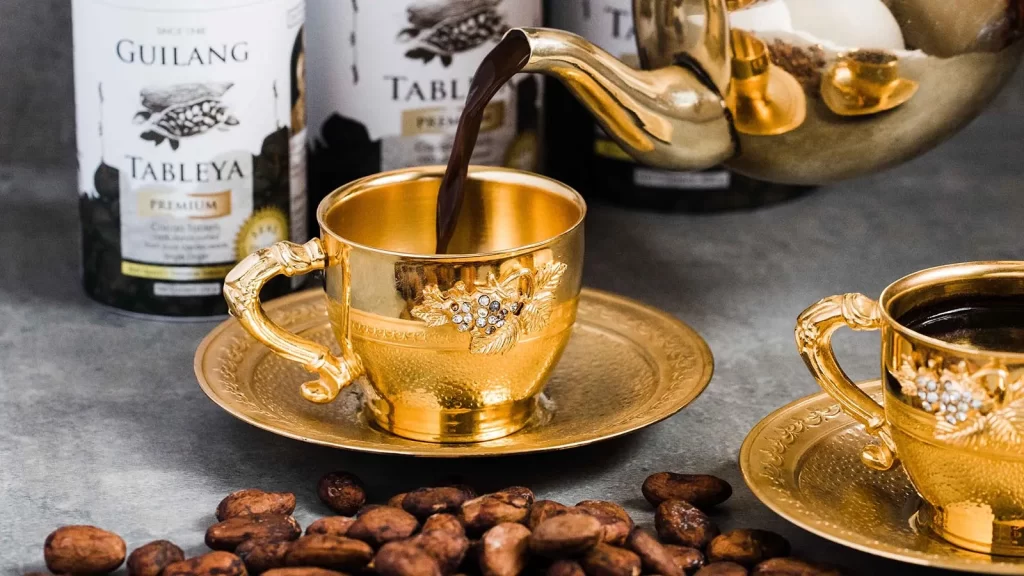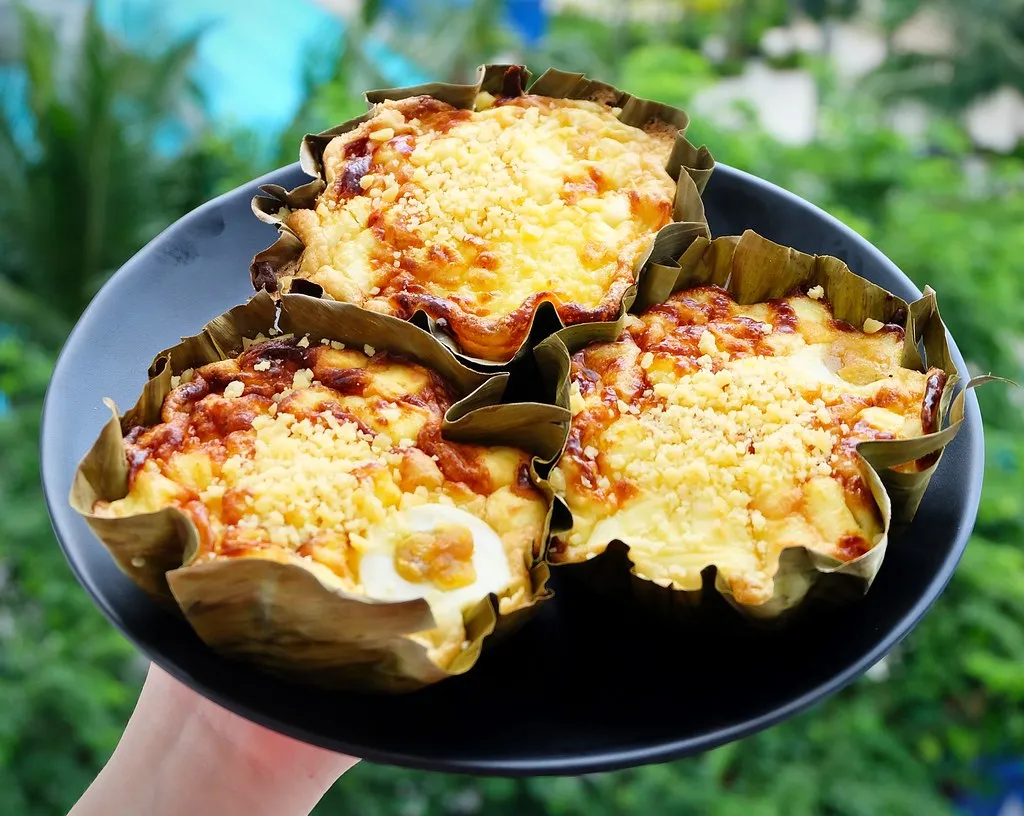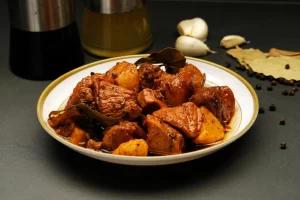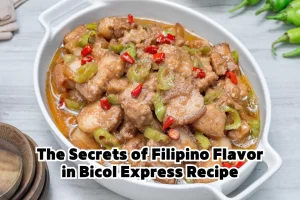The Best Fluffy Pancakes recipe you will fall in love with. Full of tips and tricks to help you make the best pancakes.

The holiday season in the Philippines is marked by cherished traditions, and a standout among these is Simbang Gabi. This event, deeply rooted in the nation’s history from the Spanish colonial era, is a series of nine dawn masses culminating on Christmas Eve, also known as Misa de Gallo. Originally a religious observance, Simbang Gabi has evolved into a vibrant food festival in modern times.
The chilly December mornings provide the perfect opportunity to indulge in a variety of warm, comforting foods as these masses conclude at dawn. The steaming lugaw offers a heartwarming experience despite the lack of cold beverages like Chemag Black Gulaman.
There are dozens of food stalls, operated by local vendors, offering a variety of delicious treats. In addition to the spiritual journey of Simbang Gabi, these stalls become a haven for food enthusiasts near the churches.
Filipino Christmas Traditions and Delicacies in Simbang Gabi
There are nine dawn masses before Christmas Eve, known locally as Misa de Gallo, in the Filipino tradition of Simbang Gabi. Originally, this practice served as a way for farmers to attend mass before heading out to the fields during the Spanish colonial period. Symbolizing devotion and anticipation for Christ’s birth, it has become an ingrained cultural and religious event.
In addition to being a religious observance, Simbang Gabi is also a social occasion and a culinary tradition. It is common for people to gather for a communal feast after each early morning mass. Filipino holiday foods are sold along the streets near churches during Simbang Gabi, which is an integral part of the celebration.
Some of the must-try delicacies during Simbang Gabi include:
- Puto Bumbong: A unique purple-hued rice cake, steamed in bamboo tubes and often served with margarine, shredded coconut, and sugar.
- Bibingka: A soft, spongy rice cake, traditionally cooked using clay pots lined with banana leaves, often topped with salted duck eggs, cheese, and grated coconut.
- Lugaw: A comforting rice porridge, perfect for warming up in the chilly December mornings.
- Tsokolate: A thick, hot chocolate drink made from locally produced cacao, offering a sweet and warm conclusion to the meal.
As well as satisfying hunger, these foods represent the warmth and community spirit of Filipino Christmas.
Puto Bumbong
During Simbang Gabi, a beloved Filipino Christmas tradition, one can easily be enticed by the distinct aroma of a special treat even from afar. This treat is Puto Bumbong, a unique purple rice cake, whose preparation is as distinctive as its color. This quintessential delicacy of these pre-dawn masses is named after the bamboo tube used in its cooking process, or ‘bumbong ng kawayan’.
Richly coated in melted margarine and complemented with a side of ‘niyog’ or shredded coconut and muscovado sugar, this dish stands out as a favorite among Simbang Gabi goers. Additionally, it’s often enjoyed with an extra topping of shredded cheese, adding a savory twist to this sweet, traditional Filipino snack. Simbang Gabi’s festive and communal spirit is captured in Puto Bumbong’s unique preparations and flavors.

Kutsinta
Similarly to Puto Bumbong, Kutsinta is another delight synonymous with Simbang Gabi. This steamed rice cake, a staple during the nine festive masses of Simbang Gabi, is made from a blend of tapioca or rice flour, rich brown sugar, and lye water. It’s a must-try for those with a penchant for sweet delights.
For anyone with a sweet tooth, kutsinta is an irresistible snack, traditionally topped with shredded coconut and a dollop of creamy, ultra-sweet yolk. Its signature yellow color, which adds to its visual appeal, comes from the natural coloring of annatto extract. In addition to satisfying the taste buds, this treat adds to the vibrant culinary tapestry of Simbang Gabi.

Lugaw
In the chilly ambiance of Simbang Gabi, a traditional Filipino event, there’s a comfort food that stands out, much like chicken soup in its soothing qualities. In the cool, early mornings of this sacred occasion, lugaw is a staple food that fulfills the need for warmth and nourishment.
In light of the current pandemic situation, where many are cautious about attending crowded places such as churches, making your own lugaw at home can help bring Simbang Gabi spirit into your home. This simple and comforting dish not only warms the body but also connects you with a cherished cultural tradition, even from the safety of your home. Here’s an easy recipe to help you recreate this beloved Simbang Gabi comfort food.

Hot Drinks
At Simbang Gabi, you can’t enjoy street food without the right beverages to complement the cozy warmth of the dishes. You’ll often find stalls offering comforting drinks as you stroll through the festive streets. Sikwate, Filipino hot chocolate, chaa, traditional tea, salabat, ginger tea, and even aromatic instant coffee are all available. Chemag Black Gulaman might not be available here, but these warm drinks are perfect for keeping the chill at bay and making Simbang Gabi as enjoyable as possible.

Taho
When the festive Simbang Gabi season arrives, Filipinos become even more enchanted by taho, a beloved treat year-round. This delightful combination of silken tofu, sago pearls, and arnibal – a rich brown sugar syrup – is a holiday must-have. Don’t be shy about asking the friendly vendors for an extra helping of sago pearls and syrup if you have a sweet tooth. During the special nights of Simbang Gabi, this is the perfect way to indulge in the sweetness of the season.

Bibingka
Just as the song “Bibingka” by Ben & Ben captures the essence of a Filipino Christmas, Bibingka baking is an iconic scent of Simbang Gabi. Savoring Simbang Gabi is an essential part of experiencing Simbang Gabi.
This quintessential Simbang Gabi treat is a soft, moist cake made from rice flour, traditionally adorned with rich carabao cheese, a sprinkling of shredded coconut, and the distinct flavor of itlog na maalat, or salted egg. The Filipino Christmas experience is enhanced by enjoying Bibingka under a festive night sky.

The binge is on!
Dive into the heart of Simbang Gabi with a street food extravaganza! While the current COVID situation might limit your ability to indulge in these treats on the streets, there’s no need to miss out. The internet is a treasure trove of simple, quick recipes that let you recreate these beloved Simbang Gabi specialties in your own kitchen. Embrace the festive spirit by whipping up these classic treats at home, ensuring your Simbang Gabi experience is as delicious and authentic as ever, even amidst these unusual times.
FAQ.
Q. What are the traditional foods to try during Simbang Gabi?
Traditional Filipino foods and delicacies await you at Simbang Gabi. Rice cakes such as Bibingka and Puto Bumbong steamed in bamboo tubes and rice porridge such as Lugaw are popular. During the celebration, food stalls near churches sell these.
Q. How has the COVID-19 pandemic affected Simbang Gabi celebrations and food experiences?
Simbang Gabi can still be enjoyed safely at home due to the COVID-19 pandemic. Cooking at home recreates the festive atmosphere and flavors of traditional recipes.
Q. Can I make Simbang Gabi special dishes at home?
Simbang Gabi dishes can be made at home. Filipino Christmas traditions like Bibingka, Puto Bumbong, and Lugaw can be brought into your home with simple and accessible recipes.





